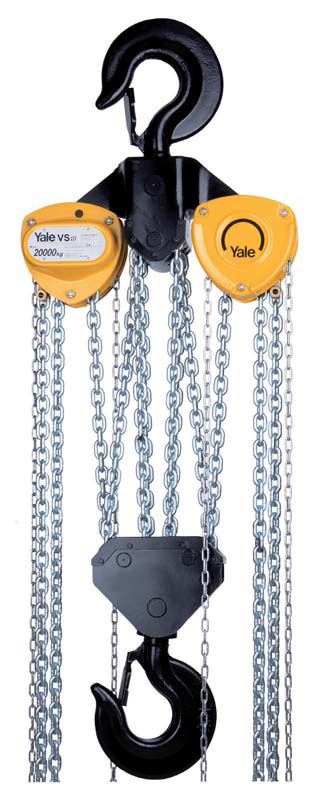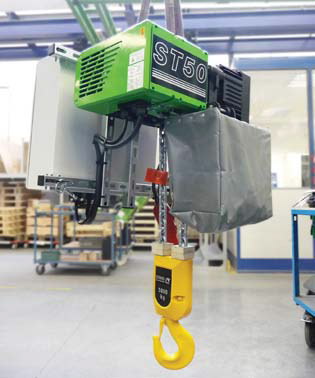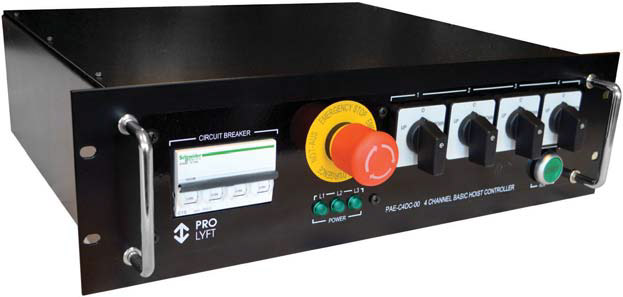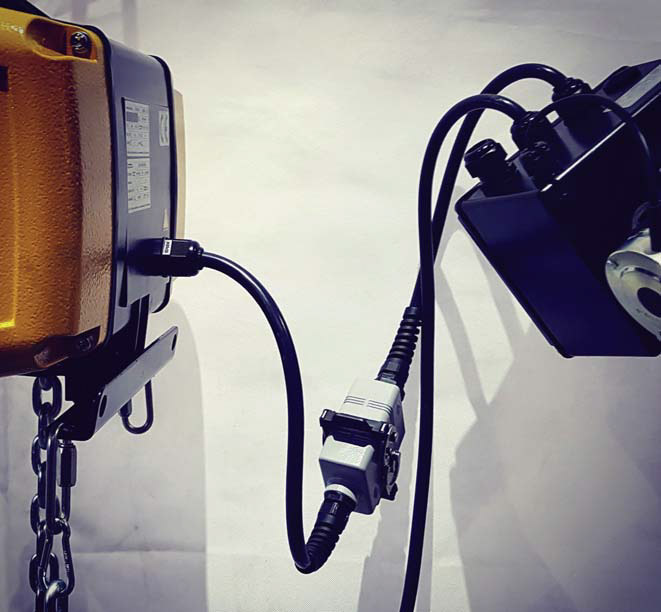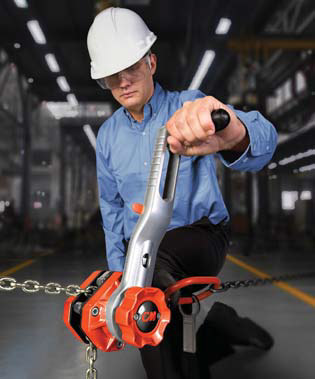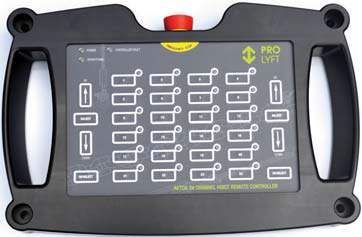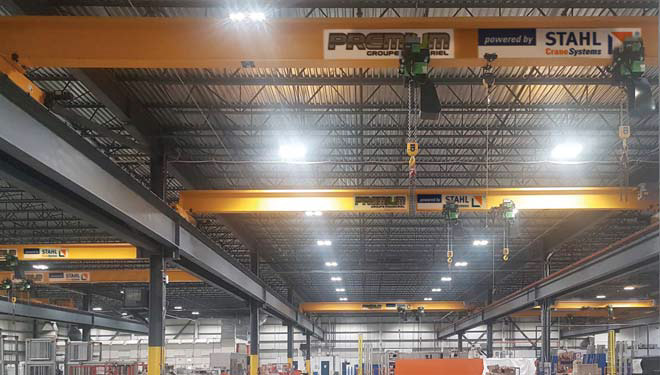Chains of success
10 May 2019The chain hoist has been around for many years. Julian Champkin finds modern additions to a design that works.
The manually operated chain hoist is ubiquitous in factories and small workshops everywhere.
As technology goes, it would seem to be a simple design that has evolved to perfection and to its limit: a man lifts a load by pulling on a chain that goes over a pulley. Sometimes the chain can be endless. Sometimes there is a ratchet mechanism that allows the operator to pull on a lever rather than directly on the chain.
Apart from that, the fundamentals have hardy changed for a few hundred years, and indeed they would seem to leave little room for change.
Martin Fuller, international account manager of Kito Hoists would tend to agree. “The basic designs of manual chain hoists have hardly changed in 15 or 20 years,” he says. “And that is because they are simple and work well. What sets a good hoist apart from a poor one is the quality of the materials, the standard of the engineering, the tolerances of the parts.
That’s what gives safety and freedom from jamming. We use 100-grade chains. Some use 80-grade, which I do not feel is strong enough. We have experimented with 120-grade but the greater strength comes at the expense of the chain being too brittle.”
Improvements, then, would seem to come by increments rather than radical re-design. Yale has extended its VSIII model by adding higher load capacities, up to 50t. Jamming and tilting of the hand chain is, they say, prevented by a new improved chain guide, which leads to smoother running for the chain. High quality bearings on the side plates, gearbox and load chain sheave, and zinc-plated brake parts and guide rollers, give smooth operation and corrosion protection. The load chain is also zinc plated.
Lift Turn Move have launched new models in their LP & GP range, the LP1000, primarily for the entertainment industry, and the GP1000 Hoist, for industry. The two-fall models have maximum lifting capacity of 2.5t; this, says LTM, fills a gap in the market where customers were needing small compact hoists with a high lifting capacity.
The load chain on the LP series is of case hardened and manganese phosphated profile steel; compared to round steel chain it provides about 15% more capacity at identical nominal diameter.
Lift Turn Move continue the philosophy of simple things that make a difference with the Electric Chain Hoists and Electric Travel Trolleys they supply from GIS. These will now be fitted with ILME connectors between the hoist and trolley. The push-in connectors make on-site installation much easier and more user friendly. The cable on each side of the ILME connector is 200mm long, meaning there is 400mm in total of cable connecting the GIS Electric Chain Hoist and the Travel Trolley. Each can be moved independently, rather than being hard wired; it is much more of a ‘plug and play’ system.
Given all that evolved fitness for purpose of the standard chain hoist it might seem strange that Columbus McKinnon have claimed a radical advance in the ratchet lever chain hoist. The CM Tornado 360 is, they say, “one of the most innovative and safest ratchet chain hoists on the market.”
Wherein does the innovation lie? And indeed what is wrong with traditional designs? Clearly something in the basic chain hoist must contain scope for improvement, because CM claim their new hoist lets the operator work up to 12 times faster and with as much as 30% less pull force than with conventional ratchet lever tools. This is no minor tweak.
Columbus McKinnon started with a more fundamental question: how do people use ratchet lever tools to perform their jobs? To answer it, they looked at what people actually do with the tool. A global team of CMCO engineers and application specialists worked with the Institute for Product Innovation at the University of Wuppertal, Germany, to perform an in-depth ergonomic study. The research included more than 200 voice-of-customer interviews across 10 countries, as well as many on-site evaluations of real-life applications for traditional lever tools.
The study revealed that lever hoists are more often used for pulling and securing than they are for lifting. In other words, they are used on their sides, with the chain pulling more or less horizontally. And, in many applications, they found that proper, safe and ergonomic use is not possible.
If the tool is at 90° to its intended position it is small wonder that its shape is not optimised for human beings to use. So CM have re-designed the tool, or more exactly its handle, to fit in with the existing design— which cannot really be changed—of the human arms, legs and back.
They claim their Sidewinder lever handle to be the first of its kind, and to be revolutionising the ratchet lever hoist. Where conventional levers move up and down—or, in the pulling and securing orientation, side to side—this one rotates, through 360°, as well as having a ratcheting action over only part of the arc if required. The lever itself has a curved and offset shape which keeps the operator’s hand and body aligned with the load chain. From the mechanical point of view this reduces the risk of the twist effect, in which the hoist twists around the chain; from the ergonomic point of view, it reduces the operator’s need to stabilise the hoist with his other hand.
The handle itself has a heavy-duty steel core and is recessed into the lever; it folds down into position on either side of the lever, allowing for easy operation from any angle.
The handle is grooved to provide a secure grip even with gloves and it rotates on its mounting so that its surface is not required to turn against the operator’s hands.
A direction indicator on the handle, highly visible, shows the direction of pull as lifting, lowering or neutral; there is quick take up and positioning of slack chain, even with one hand. The neutral position cannot be achieved under load, so the chain cannot accidentally run free. A cast chain end stop allows the user to easily position the chain in free-chaining mode and prevents it from entering the liftwheel and jamming the hoist.
The Tornado 360 comes in capacities from ¾t to 9t, with a standard lift of up to 20ft (7m); an optional feature is an internal load limiter, which allows the handle to rotate freely, preventing the lifting of an overload sufficient to damage the hoist.
Turning to powered hoists, another traditional feature of them is that for heavier capacities, and for indoor use in factories and plants, they are generally fitted with wire rope rather than chain. Nevertheless, Stahl CraneSystems bucks this trend with its ST50 chain hoist. It, like Kito’s hoists, make no claims to be new: it was first introduced in 1999 and has sold over 100,000 units.
It is mentioned here to again illustrate the longevity of many chain hoist designs, a longevity born of being fit for purpose: the ST50 lifts loads of up to 5t, which is normally well within the wire rope range.
Nevertheless it frequently offers a costeffective alternative to a wire rope hoist, and 5t is not the limit of the ST range. Stahl’s chain hoist range now goes up to 6.3t.
Indeed Stahl CraneSystems has reviewed its strategy and has found that for certain other applications chain offers distinct advantages over wire rope. CanStahl, the hoistmaker’s Canadian representatives, were asked to provide lifting technology for Nortek Air Solutions of Quebec, of one Canada’s leading suppliers of ventilators, coils and other pneumatic equipment. Nortek needed to expand its operating site with 18 new single-girder overhead travelling cranes. 15 of these were to work in tandem, with two hoists together performing the lifts.
In such applications wire rope would be the default option. But here it was important in the tandem operations to be able to lift the load without any sideways movement of the hook. To achieve this, CanStahl decided to use chain instead.
The chains, unlike wire, in tandem give a true vertical lift, says CanStahl. The weight of the chain gives no side to side movement. Other advantages over wire rope were in price and in headroom, which was limited at the site. A small distance between the load hooks was needed: the smaller size of the hoists allowed this. They also gave smaller approach distances at each side of the girder.
In total, 35 new chain hoists with capacities between 2t and 5t were installed. The spans of the bridge cranes are up to 20m, with lifting heights between 6m and 8m. The cranes are each equipped with a 12-button radio transmitter that communicates with three receivers for crane movement and two hoists with tandem operation. The layout eliminates the need for trailing control-cable systems.
After the commissioning of the 35 chain hoists further joint projects are being planned, such as replacing older lifting equipment in the factory. CanStahl now promotes the use of chain hoists rather than wire for deployment with low loads.
The digitisation of control systems that is becoming standard in other lifting technology is also extending to chain hosts. Liftket in April 2019 began production of its first electronically-controlled chain hoist, the Star VFD. The claimed advantages are many. It has a load-dependent, independentlyvariable speed control, from 2–24m/min, but without a load it can be operated at up to 200% of the nominal speed.
The company says that this is the first chain hoist with an integrated data display. The values it shows include the operating life, the remaining useful life, the full load hours, the number of brake clearances undergone and the temperature of the inverter. Having that data stored and instantly to hand decreases the maintenance efforts and costs, and increases safety. Capacities are from 125kg to 2t.
Prolyte are moving in the same direction. They offer options of conventional handheld pendant control units, capable of handling one or two hoists, which include an emergency stop button; or a rack mounted ‘Basic Controller’ and ‘Pro Controller’ range, which is a push-button system that comes in 4, 8 and 16-channel versions. More sophisticated still is their touch screen control, which works in conjunction with the Pro controller and offers up to 120 channels and feedback possibilities to notify the operator of position, load, work hours and the like.
Primarily intended for the entertainment industry, they say that the panel layout and the functionality of the buttons have been carefully designed to meet the demands of daily practice in lifting, where any selection mistake can create an overload situation.
Chain hoists have lasted so long because they work; but, while based on a traditional technology, they can accept modern modifications. It is a fair bet that they will not disappear any time soon
